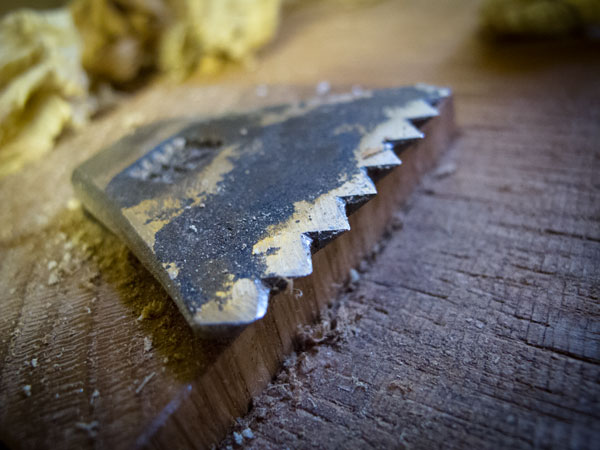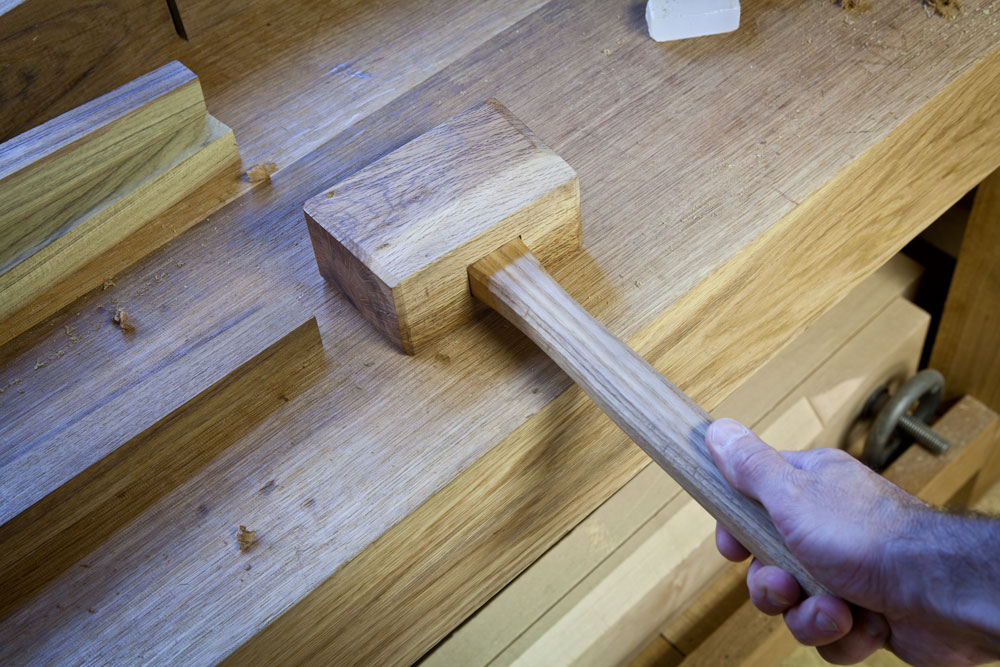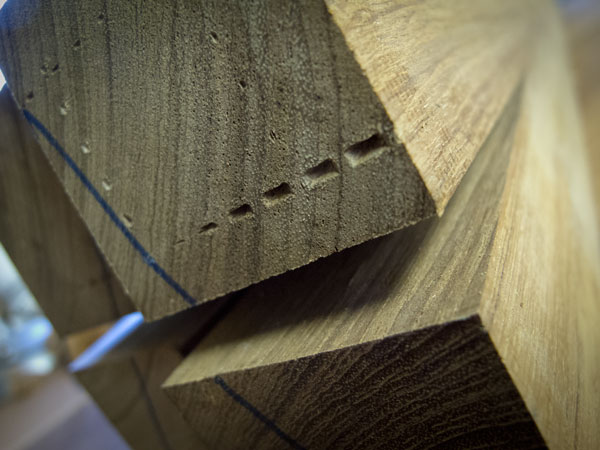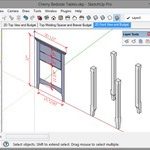We may receive a commission when you use our affiliate links. However, this does not impact our recommendations.
I know there are people who use edge tools straight out of the box, but I can’t. I always sharpen them. So why should workbench accessories be any different?
For many years I’ve been indifferent to metal planing stops. The aluminum ones are terrible for too many reasons to even get into here. The iron ones I’ve used in the past are OK, but there is always the risk that you are going to slam a plane into one.
No wonder tail vises are so popular.
But since August I’ve been re-evaluating my relationship with the iron planing stop. I’ve really no choice. I sold my old workbench that had a full array of workholding devices (including a tail vise) in favor of a French behemoth that has only holdfast holes and a metal planing stop on its benchtop.
I’ve built three pieces of furniture and some try squares on this bench so far and have been slowly falling in love with the planing stop.
What changed my attitude? For starters, a file. After installing the planing stop, I grabbed a file and sharpened the teeth in about five minutes. Somewhere in my frontal lobe I recalled that some old stops were made using sharp nails. So I thought I’d try sharpening my existing stop.
This made a huge difference. Suddenly my work stayed put.
Then my brain’s second neuron decided to fire that day. I remembered something odd about the so-called Stent panel – an early carving showing Burger King planing at a workbench while Skeletor brings in some tea.
As it’s a carving executed by a woodworker, everything in the scene carries some important visual information. On the bench of the planing Burger King, there are only four things shown on the benchtop: the plane, the wood, the metal planing stop and a hammer or mallet.
I never gave this any thought until recently. Why would a hammer be important to planing?
To knock the wood into the planing stop. Duh.
This little trick made the planing stop bite even harder into the stock. I can easily immobilize rock-hard teak with a whack of the mallet.
Yes, this leaves marks in your work. You learn to deal with it. And yes, you have to be careful around the planing stop, it’s about as dangerous as having a sharp chisel sitting on your benchtop. You get used to it.
My new bench also has another unusual characteristic: Its leg vise doesn’t have a garter or a parallel guide. I was worried at first that I’d miss both features, but it turns out not to be the case. More on that in a future post.
— Christopher Schwarz
Here are some supplies and tools we find essential in our everyday work around the shop. We may receive a commission from sales referred by our links; however, we have carefully selected these products for their usefulness and quality.














Has anyone tried this mortised stop? I know it isn’t traditional. Is it more of a gimmick?
http://www.leevalley.com/US/wood/page.aspx?p=31148&cat=1,41637
I hope you keep us informed on how this goes. I’m up in the air on my upcoming bench build whether to go for a ‘bells and whistles’ split-top Roubo ala Benchcrafted or one like you’re using now. The simplicity of the unadulterated version certainly has it’s charms.
Hate to disagree with you, but I don’t think that’s tea she’s bringing in.
I am on a totally different track – I am looking to make wide wooden stops to fix the rectangular holes in my continental style bench. I don’t like the marks my metal stops make in my projects. I guess with good planning I could do all my planing before cutting the piece to final length.
Also, I find it interesting that you use a modern metal plane but make such a point of keeping your bench true to original.
Been using old cast iron “pop-up” stops for years. Got a couple of railroad spikes turned stops too. They hold paperwork down. I moved the primary stop to just in front of the vise chop. Now I don’t have to twerk my way past the vise hub anymore. Dur! Sharp teeth are much preferred too. Dull ones are much more hazardous than sharp ones. To the work, that is.
You could always take a small piece of scrap wood and smack it onto the stop to act as a guard. When I first looked at the plate I thought that the stop might actually be set so the edge was inside the footprint of it’s base and the projection of the edge could have been poor perspective on the etching.
Chris
Follansbee and I are on Round 7 re detent in front of toothy critter.
I vote for detent.. Slavish submission to Roubo is being a moldie figge.
Why not protect the pinKees? The fact hat you haven’t got sliced yet is
no argument. Believe the HAMMER in Stent is to adjust the plane blade.
The Stent Panel is joinery’s Rosetta Stone.
Jennie
Chris – Glad to hear your new leg vise is operating without the parallel guide or garter. I’m sure I expressed to you years ago that the whole thing is, in fact, a cruel hoax perpetrated by some historical prankster.
Mr. Schwarz,
My eyes were drawn to the mallet on your bench. Is that made from scraps from the French Roubo bench build or just one you picked up somewhere?
Are you planing against the stop when doing final smoothing on a project?
I’ve used these on the benches at the museum I volunteer at for the past couple of years. I’ve grown quite fond of them. No more stock slipping sideways on the planing stop. I’d like to get one for my shop at home but the good iron ones aren’t too commonly found. Where’d you get yours? Peter Ross?
Peter Follansbee sent me the following observations:
a. That’s how I mashed Roy Underhill’s finger – my natural move when shoving the workpiece against the planing stop is to hit the rear of the workpiece hard against the stop. In Roy’s case in the TV studio, no teeth on the stop. Doesn’t matter, habit is habit. Cost Roy one blackened finger.
b. Hurray for not cutting the recess for the toothy bit. Leave it as it is. That’s how it should be. I’ve used mine for maybe 15 years. Might have hit it once or twice w a plane. Stupid me is all. Mistakes cost you. I never have a need for the bench hook to be out of the way.
Looks good.
PF
“…And yes, you have to be careful around the planing stop…”,
Those teeth look nasty sharp. Did you see the pics of Jameel’s bench where he creates a small recess in the bench top for the teeth of the stop? Might save your palm or wrist someday. Just a thought.